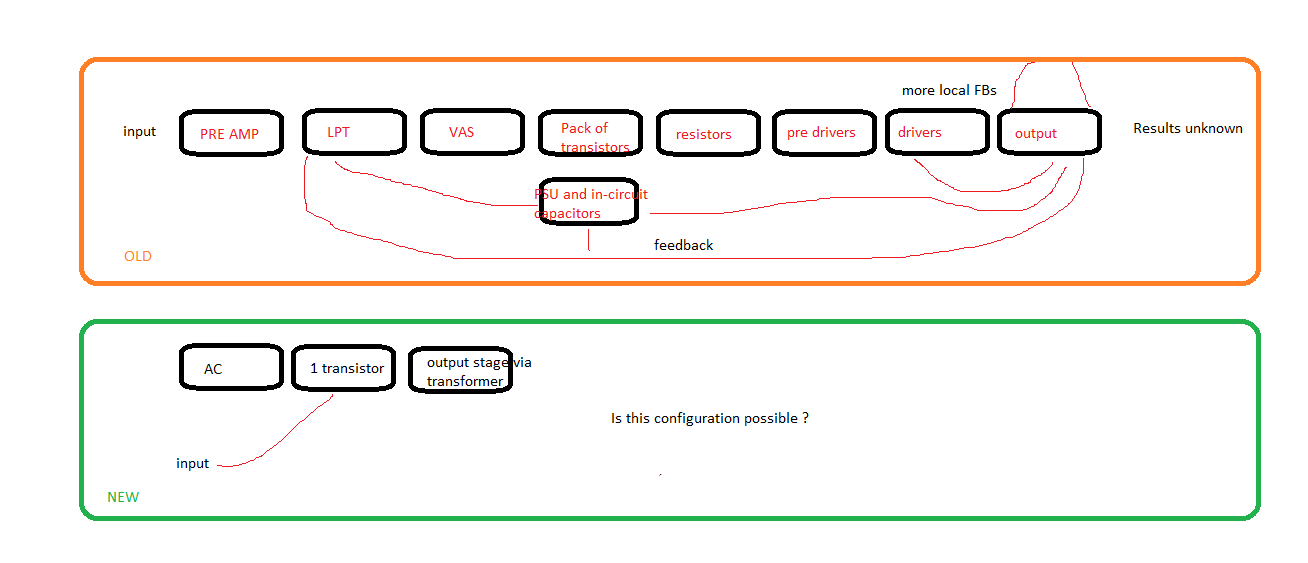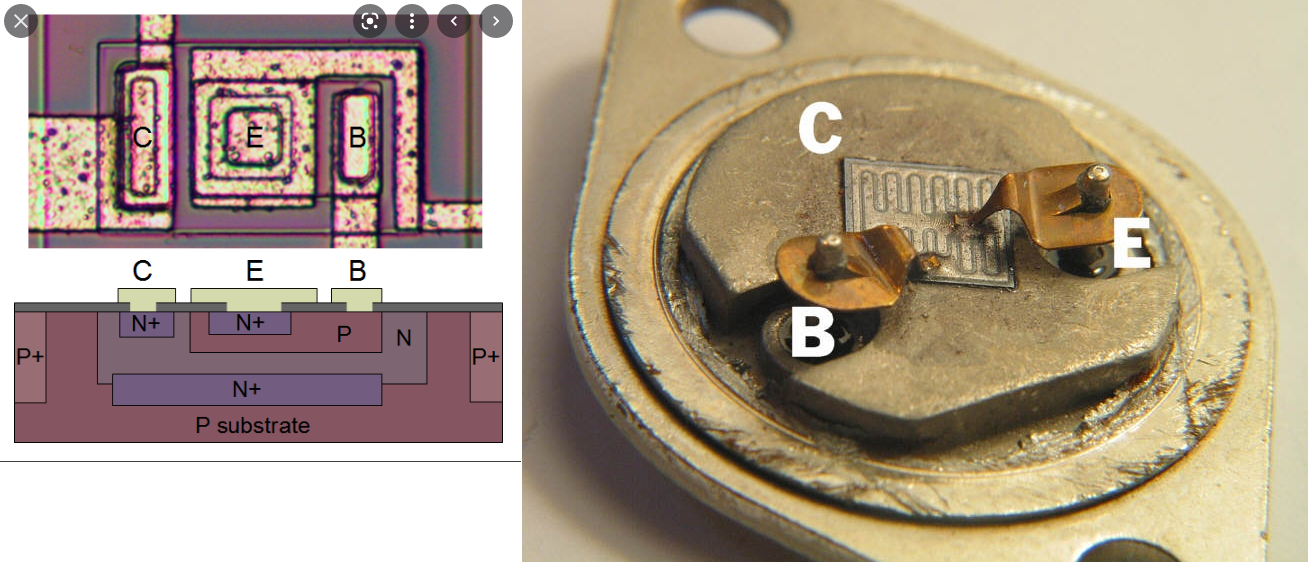I know, soldering has become a part of our system, its kind of a sad situation we are in. We can do it differently.
We sure know that:
distortion +
hold and release(timing)(basically long wire, short wire, wire with a different angle) can all be done with-in a package. Transistor that is tuned for audio, is it possible ?
Everything else is just Powersupply. Every little bit of a detail in the acoustics is PSU and wires !
Best way is always the easiest .
.
Less components - less contact material - less hassle.
I think we should give it a thought.
We all know that regulators are good cuz there is that "reserve" that is being regulated down to some value. The bigger the voltage difference, better and deeper dynamics.
How can we re-create the same scenario without regulators or even only with 1 transistor ?
You know guys, there is that saying: If a blind man leads a blind man, both will fall into a pit
We sure know that:
distortion +
hold and release(timing)(basically long wire, short wire, wire with a different angle) can all be done with-in a package. Transistor that is tuned for audio, is it possible ?
Everything else is just Powersupply. Every little bit of a detail in the acoustics is PSU and wires !
Best way is always the easiest
Less components - less contact material - less hassle.
I think we should give it a thought.
We all know that regulators are good cuz there is that "reserve" that is being regulated down to some value. The bigger the voltage difference, better and deeper dynamics.
How can we re-create the same scenario without regulators or even only with 1 transistor ?
You know guys, there is that saying: If a blind man leads a blind man, both will fall into a pit
Last edited:
That's a very interesting find - even more interesting if the original mesa die structure was still employed. It's at least 40 years on though, so I think it would be reasonable to have doubts. Wow! a typical fT of 30 MHz isn't too shabby for old power silicon in any case. https://pdf1.alldatasheet.com/datasheet-pdf/view/532618/COMSET/BDY58.htm
I can't imagine them not being. Halfin is listed on Comset's site as their primary distributor.
Thanks, ordered them
Just noticed that Witch Hat Audio uses the BUV21G as output devices in their Naim clone:
https://witchhatservicing.co.uk/2018/09/24/our-new-phoenix-upgrade-for-naim-power-amps/

https://witchhatservicing.co.uk/2018/09/24/our-new-phoenix-upgrade-for-naim-power-amps/
Attachments
Last edited:
It might be possible to arrange the architecture of an amplifier into any combination of gain/feedback stages you could imagine BUT..... at the same time, we need to also ensure frequency, gain and thermal stability over the full audio bandwidth, expected power/load impedance ranges and slew rates required for high fidelity audio. Otherwise, it will likely disappear in smoke and flames. It's easy to say that design problems can be fixed but not as easy to even get started on solutions without a good working knowledge of analog amplifier design.Hmm, is this possible ?

I assume you prefer to read Russian text but I'm sure you can get access to old online editions of "Audio Power Amplifier Design Handbook" by Douglas Self. The fourth edition is about simplest to understand and still available for free download. I'd use a PC rather than a phone for study, if possible.
Last edited:
Interesting. Nice and fast. Its SOA is kinked like the BUV20, so I'm guessing another dual-die?
Interestingly, at 80V rail-to-rail swing the BDY58, BUV20 and BUV21 all have about 0.5A under the SOA curve. While the BUVs' curves are generally beefier, they're not at rail-to-rail due to their kinks.
Interestingly, at 80V rail-to-rail swing the BDY58, BUV20 and BUV21 all have about 0.5A under the SOA curve. While the BUVs' curves are generally beefier, they're not at rail-to-rail due to their kinks.
What is of concern regarding SOA is what current the transistor can handle at the single rail voltage of 40 volts. The sustained currents at the zero crossing can be high when driving a “short”. True, the transistor can still be conducting due to reactive loads even after VCE goes above 40 - but those are very short-lived events which only occur for microseconds to maybe few milliseconds at a time. Not for the 25 ms that can occur at 20 Hz driving a short. And since the cap or inductor is in the process of discharging at the time, the current rapidly dissipates. IF you have enough DC SOA at the zero crossing, you generally stay inside the pulsed SOA capability as VCE increases above that. Even with one of these kinked switching types.
It’s interesting that Witch Hat and Avondale are using ancient power transistors. I can understand wanting the TO-3/TO-204 cans for making a close clone of the original Naim; like a listed building using plaster and lath instead of drywall. Power transistor technology has come a long way. Some have incredible SOAs. I would like to see kits using the latest tech.
I agree. Once everything is inside a metal case, the only persons interested in the parts would be collectors, glorying somehow in them for the sake of originality and perhaps for what some perceive them to do. I doubt that anyone will get to hear the same sound quality now as the originals delivered because so many component types no longer exist or wont be functioning as they did 30-50 years ago. Those specialist parts sellers you may trust as steering you in the direction you want, are also trying to wean you onto their currently available stock lines for their considerable benefit too. It's not always wise to just skip along behind the pied pipers who figure they know best either.
In any case, I think we do still need to understand the workings of what we seek rather than just juggling specs of shopping lists for pieces of it.
In any case, I think we do still need to understand the workings of what we seek rather than just juggling specs of shopping lists for pieces of it.
- Home
- Amplifiers
- Solid State
- NAP250 clone

